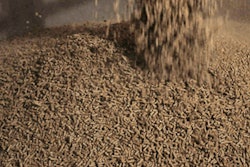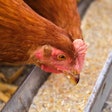The use of alternative feed ingredients for poultry has been a hot topic in the industry for a couple of years now, based on skyrocketing prices for corn and soybeans. But exactly what are alternative feed ingredients and how do we best use them?
Those were the questions that a panel of experts dealt with in a presentation titled “Impact of Alternative Ingredients on Poultry Feed and Cost,” during the WATT Online Animal Nutrition and Health Forum April 29.
Dr. Nick Dale, from the University of Georgia, pointed out there are some alternative ingredients available, but that quality control of these ingredients is of utmost importance, especially since there are nutrient variations depending on the source of the ingredient. (Register and listen to presentation.)
He said while these ingredients may not save a great deal of money, there were definitely some opportunities available, especially for niche uses.
Dr. Dale also pointed out companies shouldn’t wait until crisis periods before evaluating alternative ingredients – that should be done all the time and quality standards should be established.
Dan Rollins, director of feed milling for Aviagen North America, concentrated on the use of DDGS and its effect on pelleting. Since pelleting broiler feed is the standard in the U.S. industry, and since more and more DDGS is being used, a careful evaluation needs to be done. DDGS nutrient variability is well known, and the feed mill must be aware of that, so they can still make high-quality pellets.
Tom Frost, director of nutrition and research at Wayne Farms, mentioned that even if feed ingredient prices have gone down substantially from last summer, they are still expensive. Therefore, alternative feed ingredients still have a role in the industry and could be used more than they are now.
He said it all boils down to the capacity in the feed mill. Does the feed mill have the capacity for different grains and different protein sources? If the feed mill does not have the capacity, then alternative ingredients won’t be used.


.jpg?auto=format%2Ccompress&fit=crop&h=167&q=70&w=250)
(1).jpg?auto=format%2Ccompress&fit=crop&h=167&q=70&w=250)











